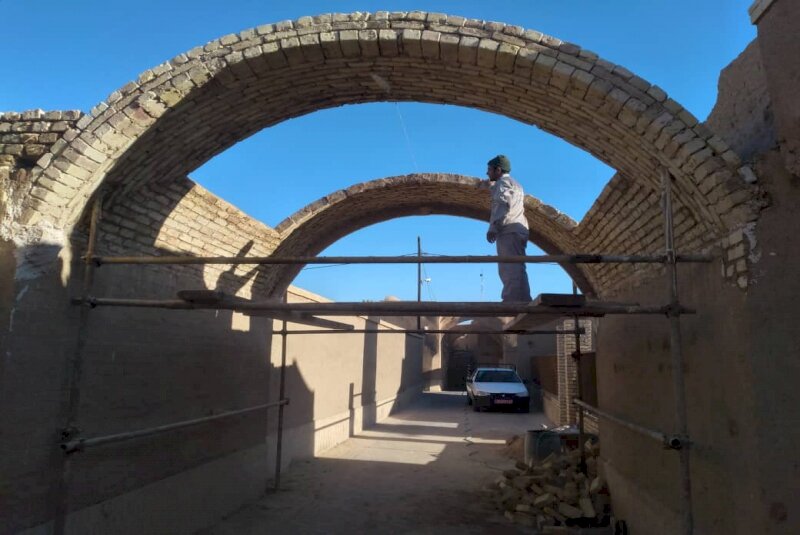Historical sabat in central Iran undergoes restoration

TEHRAN – A historical sabat in the ancient neighborhood of Bazaarno in the central city of Yazd has undergone some rehabilitation works, Yazd’s deputy tourism chief has said.
Sabat is an arched structure built between the opposite buildings on both sides of a narrow street in tropical and desert areas and it creates shade and a cool place for passers-by. Due to its semi-covered nature, this structure creates air blinds in summer, which cools the air inside sabat and in winter makes the air warmer.
The restoration project aims at replacing worn-out bricks, strengthening the structure using cob material and repairing the rooftop and walls of the historical sabat, which has been damaged over the time, CHTN quoted Ali-Asghar Samadiani as saying on Wednesday.
In July 2017, the historical structure of the city of Yazd was named a UNESCO World Heritage. Wedged between the northern Dasht-e Kavir and the southern Dasht-e Lut on a flat plain, Yazd enjoys a very harmonious public-religious architecture that dates from different eras.
Yazd is usually referred to as a delightful place to stay, or a “don't miss” destination by almost all of its visitors. The city is full of mudbrick houses that are equipped with innovative badgirs (wind catchers), atmospheric alleyways, and many Islamic and Iranian monuments that shape its eye-catching city landscape.
It is a living testimony to the intelligent use of limited available resources in the desert for survival. Water is brought to the city by the qanat system. Each district of the city is built on a qanat and has a communal center.
The use of earth in buildings includes walls and roofs by the construction of vaults and domes. Houses are built with courtyards below ground level, serving underground areas. Wind-catchers, courtyards, and thick earthen walls create a pleasant microclimate.
Partially covered alleyways together with streets, public squares and courtyards contribute to a pleasant urban quality. The city escaped the modernization trends that destroyed many traditional earthen cities.
It survives today with its traditional districts, the qanat system, traditional houses, bazaars, hammams, water cisterns, mosques, synagogues, Zoroastrian temples, and the historic garden of Dolat-Abad. The city enjoys the peaceful coexistence of three religions: Islam, Judaism, and Zoroastrianism.
ABU/
